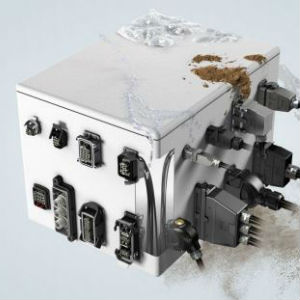 How connector forms affect their usability, according to HARTING Canada
How connector forms affect their usability, according to HARTING Canada
December 9, 2020 REDWIRE is news you can use from leading suppliers. Powered by FRASERS.
Posted by Harting Canada Inc
The family-owned HARTING Group is a global leader in connectivity solutions. HARTING invented the modular connector and... Read more
Subscribe
Free REDWIRE e-newsletter

HARTING offers differing connector shapes.
HARTING Canada is not only a leading manufacturer of connectivity solutions, but also a team of experts on them. The company has plenty to say about current trends in industrial connectivity – including different connector forms, especially rectangular and circular. The shape of a connector plays a major role in its usability.
With its impressive lineup of both rectangular and circular connectors, HARTING offers a solution for virtually every application.
Small versus large pin count
After circular connectors were developed in the 1930s, the United States Department of Defense adopted them for use in challenging applications in aeronautical and tactical service. These days, they are common in many industrial environments other than the military. Circular units are mated by threading on the plug and receptacle that hold them in place.
Invented by HARTING co-founder Wilhelm Harting in 1956, rectangular connectors have the same reliability in harsh conditions, but can be installed closer together and are usually locked with levels, although some use internal locking mechanisms.
Pin number affects connector forms and sizes: when it ranges from three to five in a specific connection point, circular connectors tend to be smaller. Larger pin counts lead to larger radii. Rectangular connectors with low pin counts are usually larger when circular ones with the same counts. If more than five pins are required, rectangular connectors become smaller, as their shapes expand in one direction.
Panel density – how close connection point must be to each other – is another factor. Circular connectors typically need extra space for a hand to twist it into space, while rectangular ones with double latches can be placed next to each other on the panel for more connections in one place. In addition, circular connectors are perfect for single-use, low-power connection points, while rectangular ones are ideal for high-power or multi-use connection.
Finally, specific conditions require certain connector forms. For example, in food processing, machines must have components that are suitable for wash-down with high-pressure hoses, but it must be impossible for food to get stuck in crevices. This application requires circular connectors.
To learn more, contact HARTING.
Share
Posted by Harting Canada Inc
The family-owned HARTING Group is a global leader in connectivity solutions. HARTING invented the modular connector and... Read more